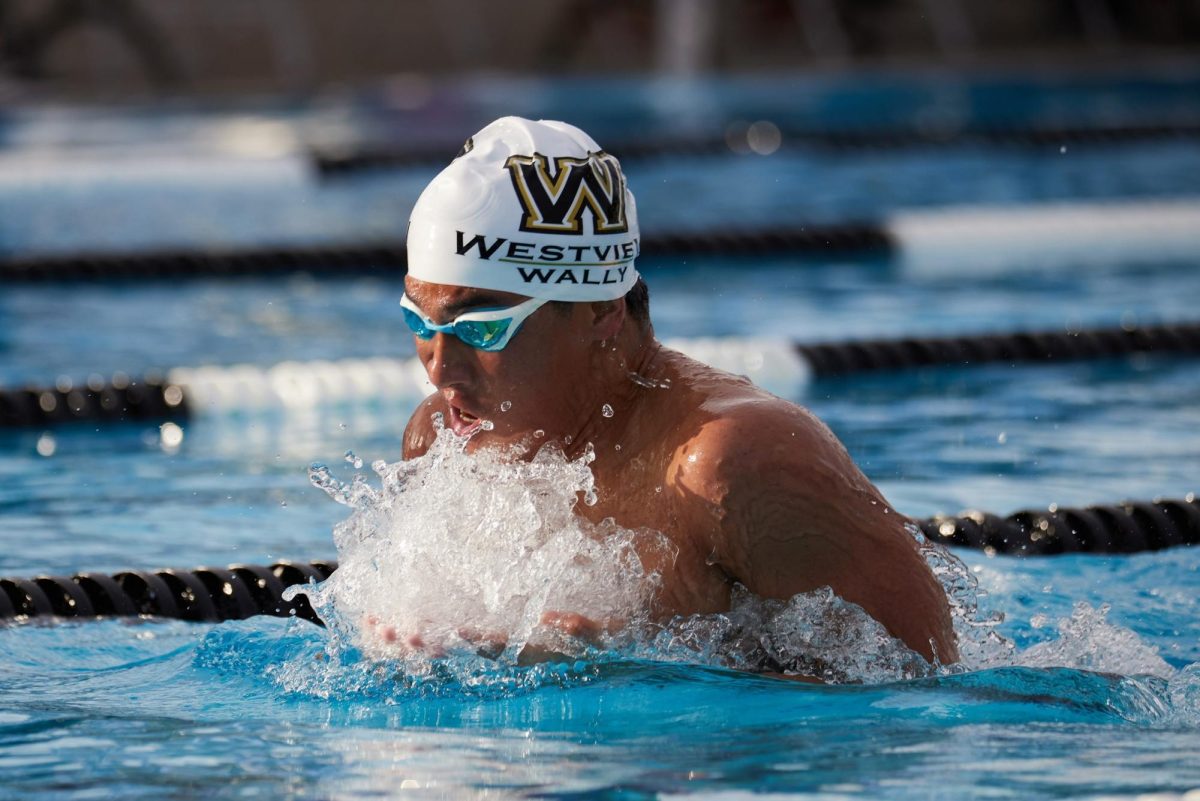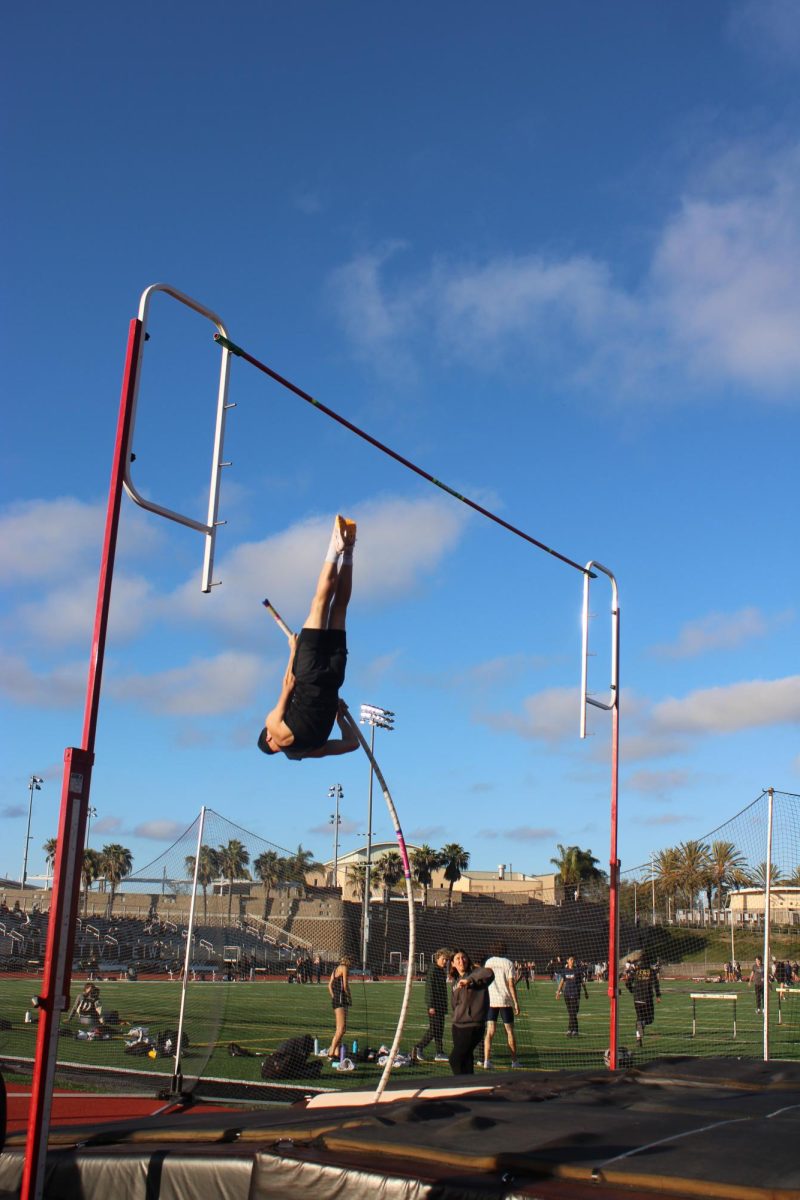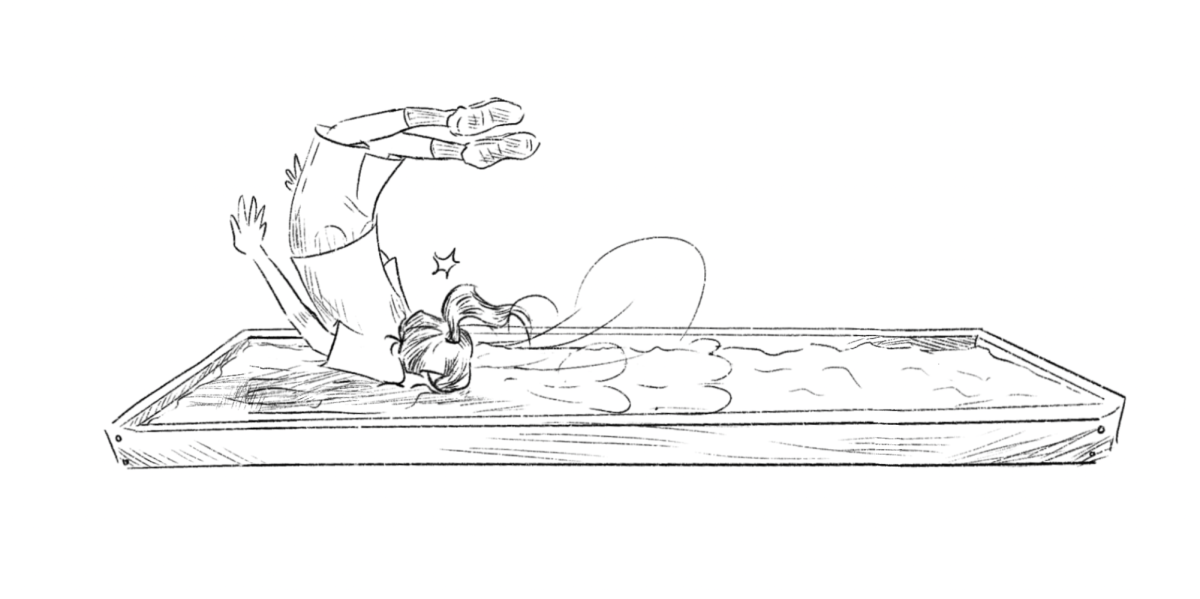It’s early October and definitely not high school baseball season. And yet, on a cold Wednesday morning, Kevin Lyons (12) is awake and pitching.
Morning dew still rests delicately on the freshly-cut field, the sun not quite bright or hot enough to evaporate it. The chain link fence surrounding the cages filters the rising sun’s rays. Down at the batting cages tucked in the furthest corner of the school’s fields, he throws to a teammate crouched 60 feet and 6 inches away. Few words are spoken, mostly it is the whizz of the ball and the thud as it hits the glove that is heard amidst the silence.
After school, Lyons will return to the same place, practicing, as he always does. Baseball doesn’t end for him when the season is over.
And it certainly won’t end for him after he graduates.
While friends and classmates stress over letters of recommendation, essays, and last-minute test retakes, Lyons has no need to worry.
Starting next fall, Lyons will play baseball for the University of California, Santa Barbara Gauchos. It’s a future he’s been planning since before his junior year.
The summer after his sophomore year, Lyons played at a tournament where several UCSB baseball scouts watched from behind the chain link fences.
NCAA rules prohibit direct contact between players and recruiting coaches, but there are several ways to bypass the communication restriction. Coaches can communicate through high school or club coaches, through unofficial campus visits, or through athletic camps on campus.
Hoping to gain further insight to evaluate Lyons beyond the baseball field, UCSB coaches reached out to his school coach, Beau Champoux.
“They immediately contacted my coaches because I was not allowed to talk to them at that time, and they asked for all my past coaches, my school coaches, parent, and teacher information,” Lyons said.
After Lyons’ initial contact with the scouts, they followed his games throughout the summer season. By October of his junior year, Lyons verbally committed to UCSB.
While it is certainly common for students to commit their senior year, a recent trend reported by the National Collegiate Scouting Association has shown a shift towards the recruitment of younger athletes.
And Sara Stone (10), at 5’, stands impressively tall among the young recruits. Despite being only a sophomore, Stone committed to the University of California, Berkeley on Sept. 3 of this year.
Although Cal had been eyeing Stone since the Festival tournament when she was a freshman, Cal contacted her club coach in order to comply with NCAA regulations.
From there, her coach suggested she attend a field hockey camp on the Berkeley campus. Over the course of three days, Stone slept in the dorms and worked on speed, shooting and passing during the camp. Placed among the elite division of those competing, Stone was approached by the Cal field hockey coach.
“She talked to me about coming to Berkeley, and at the time I wasn’t really ready, so I told her, ‘I don’t really want to make a decision yet,’” Stone said.
Still unsure, Stone kept in touch and showed up at a Cal field hockey clinic a month later that had invited about 20 players.
Scrimmaging in small games of 5 on 5, and working on a number of technical skills drills, Stone was once again exposed to the Cal environment and she decided to then accept the coach’s offer, thus verbally committing to Cal.
As neither Lyons nor Stone were seniors when they committed to their schools, the students were unable to sign a national letter of intent. The national letter of intent is a binding commitment that ensures financial aid toward the institution where the athlete agrees to attend.
A verbal commitment, on the other hand, is not officially recognized by the NCAA. While technically in compliance with the rules and regulations, it ensures nothing legally binding for either the athlete or the institution, essentially rendering it useless. Nonetheless, in most cases, student athletes who make these non-binding commitments still end up attending and playing for the university ot college they verbally committed to.
Colleges still continue to use verbal commitments as a means for recruiting because they signal to other schools what an athlete’s future intentions are. In addition, it simplifies the recruiting process for athletes and allows for a smoother transition.
It is important for athletes to remember that although a generally solid contract, a verbal commitment is not recognized by the NCAA and therefore there are ways to nullify the agreement.
Athletes must maintain GPA and test scores, protect their bodies from injuries, and stray away from any activities potentially against the law. Failing to do so could result in the school revoking the offer.
“There was more pressure [throughut the process] before I committed, and after I committed it’s definitely been more relaxing, since I can just go out and play, and know I’m good enough and have more confidence to play at the next level,” Lyons said.
Stone said she felt the mounting pressure accumulating as she faced the rigor of maintaining her athletic and academic statistics. The push for younger and younger athletes places new pressures on students to excel as quickly as possible in order to receive scholarships to the university of their choice before they run out.
“It was really stressful going through this process, and getting it over with is nice,” Stone said. “[But now] I have to work harder to keep my position, making it more stressful to work to keep my grades up.”
In the hopes of not missing out on scholarship money and team roster spots, athletes like Lyons and Stone have had to make their college decision faster than most others do in exchange for a bit of security.





